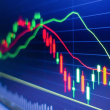by Thanos Bardas, PhD, Co-Head of Global Investment Grade Fixed Income, Olumide Owolabi, Portfolio Manager, Global Fixed Income, Brad Tank, Chief Investment Officer—Fixed Income, Neuberger Berman
As the ink was drying on our latest Fixed Income Investment Outlook, the northern hemisphere was about to enter a punishing heatwave and the U.S. Bureau of Labor Statistics was preparing an inflation report to give the weather a run for its money.
The headline Consumer Price Index (CPI) rose 1.3% month-over-month in June, the second largest monthly gain in 40 years. That pushed year-over-year inflation up to 9.1%, the highest reading since 1981. Core inflation came in at 5.9%.
These numbers were substantially above market expectations—but not a big surprise to us.
While many market participants have started looking for a peak in inflation, we anticipate rising numbers all the way to the end of the year. Our expectations for core U.S. inflation—around 6% in December 2022 and 3.25% in December 2023—put us at the higher end of the market on both the level and stickiness of price rises.
Why do we take this view? And what might it mean for monetary policy and Treasury yields?
Broad
First and foremost, our view is informed by how broad inflation has become.
Ninety-seven percent of the items in the CPI basket have their three-month average inflation rate moving upward. More than 40% exhibit six-month annualized inflation of 6% or more. The Federal Reserve Bank of Cleveland’s “Trimmed Mean” inflation measure, which strips out the items with the highest and lowest numbers, is at its highest level ever.
When we look at the five major categories of goods and services, that breadth of inflation means that we see some that are high and show signs of easing off, but others are still gathering steam.
Food inflation is high and likely to go higher, in our view—but easing supply-chain issues could bring it down quickly early in 2023. Core goods inflation is a similar story of potentially easing bottlenecks. Energy inflation could be volatile: Supply is exceptionally tight, but a recession could remove some demand. Inflation in core services ex-shelter is likely to remain high, as travel demand levels off but healthcare prices strengthen.
But it is shelter where we anticipate the most heat, driven by the tight labor market and still relatively high wage growth. This component of the CPI has tended to be sticky in the past, and this time around, tighter monetary policy is slowing down U.S. home sales but failing to put a lid on rising transaction prices. We think shelter costs will still be rising faster than 6% well into the second half of next year.
Price rises could be even trickier to manage in Europe. The European Central Bank is starting its policy tightening much later than the U.S. Federal Reserve, and from a much more accommodative base. Wage growth is still at an early stage, and there are signs of organized labor unrest. And the energy supply situation is particularly dire due to the proximity of the Ukraine crisis: Last week, the European Commission urged EU member states to cut gas consumption by 15%.
In response, the ECB raised rates by 50 basis points last week, and the Bank of England is considering the same for its August 4 meeting.
Mean Reversion
In addition to the underappreciated breadth of inflation, in terms of both items and regions, we think the consensus overestimates the potential for price mean reversion, particularly in commodities—the idea that high prices are the natural cure for high prices.
That belief in substantial mean reversion appears to be based to some extent on fundamentals, such as the potential for recession and the relief of geopolitical and supply-chain bottlenecks. But it also appears to be dependent on signals from futures markets, which, for example, are pricing oil for delivery this time next year at around $83 per barrel.
We would question the quality of the information that far out on futures curves, where there are low trading volumes. And yet we find it difficult to justify current U.S. Treasury Inflation Protected Securities (TIPS) pricing, which puts inflation by the end of 2023 at just 2.4%, without plugging the futures curve into our pricing models.
Restrictive
So, what might this mean for rates, in our view?
We think the level and stickiness of inflation will require the Fed to raise its policy rate substantially above its estimate of the neutral rate (which is the rate that neither restricts nor stimulates the economy)—and hold it there for some time.
The market is currently pricing the long-run neutral rate at around 2.25% – 2.50% (a range that we expect to shift higher); at those levels, we think the Fed will go to a terminal rate between 3.25% and 3.75% and get there by the first quarter of next year. It should get another 75 basis points closer to that rate this week.
How long is the Fed likely to stay at this restrictive terminal rate? The market has started to push its expectations out, but only marginally: It is still pricing for a terminal rate of 3.5% or lower, and for a rate cut as soon as the second quarter of 2023.
We think that will prove too dovish unless economic growth significantly deteriorates, U.S. labor markets weaken substantially, and inflation pressures dissipate in the second half of this year. In our minds, it is at least as likely that inflation proves even more stubborn than our above-consensus view, forcing the Fed to a terminal rate in the 4.00% – 4.50% range.
We assign a weighty probability of about 20% to each of those two tail risks, and that feeds into our wide estimate for the trading range of the U.S. 10-year Treasury yield over the next 12 months, of between 2.75% and 3.50%, with a high chance of a sustained move toward 4% should the economy avoid recession and core inflation remain sticky north of 4%.
Over the past few weeks, the mercury in the thermometer appears to have been correlated with the data in the inflation reports. Unlike the summer sun, however, consumer prices could stay hot well into the winter—and many investors appear unprepared.














